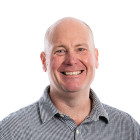
Kyle Bland Senior Geologist
I’m interested in the geological, paleogeographic, paleoenvironmental, and biogeographic evolution of the New Zealand region at multiple scales and time frames. I have extensive field experience examining sedimentary rocks across much of Aotearoa, with particular expertise in the eastern North Island and Taranaki-Whanganui regions. I am a current co-compiler of new geological and geomorphological maps within the Auckland region, and lead GNS’s multi-disciplinary ‘Coastal Change and Adaptation’ research project. My passion for community outreach means I am a frequent proponent, participant, and leader of activities particularly targeting school children and their teachers, and iwi — especially in the Northland, eastern North Island, and Taranaki regions, including via the award-winning “GeoCamp” initiative.
View Bio Contact Me